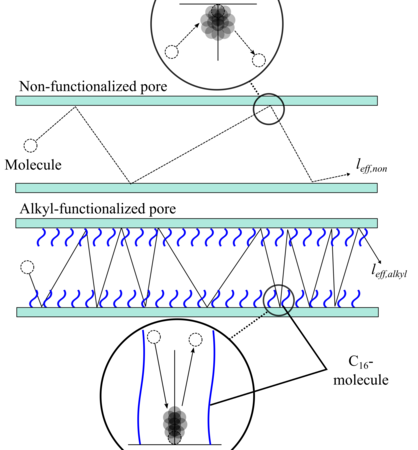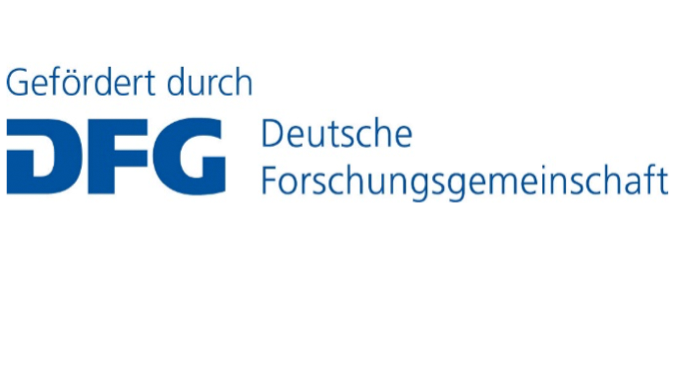Gas transport in functionalized mesopores
Fundamental understanding of the mechanisms and interactions between surface functionality of porous material and gas phase is crucial for the progress in fields such as membrane science or gas chromatography. Effects of surface functionalizations have been fundamentally studied for micropores (< 2 nm), but little is known about the mechanisms of their influence on the gas flow in larger pores, when surface diffusion is neglected. Recent studies show that even in mesopores of 20 nm and above surface functionalizations may have a significant influence on selective gas transport. However no attempt has been made so far to systematically quantify structure-activity relationships with respect to gas transport. The aim of this research project is to provide an experimental data basis and, based on this, to establish quantitative structure-transport relationships in case of gas flow in mesopores. By this means we intend to gain profound knowledge about the influence of surface functionalizations on the gas transport mechanisms in mesopores.

Schematic illustration of a gas molecule propagating through pores without and with an alkyl-functionalization.
Especially for gas separation and chromatography, functional porous coatings are often used to enhance or decrease the flow of desired gas species. Often though, a full understanding of the involved mechanisms resulting in the desired behavior is still missing, limiting applicability and effectivity of chemical surface functionalizations. In mesopores (2-50 nm) under ambient conditions, the Knudsen number is large and gases propagate according to Knudsen flow through porous structures. Fortunately, the Knudsen flow has a linear relation to pressure and the theoretical values are in very good agreement with experimental data. Therefore, systems characterized by Knudsen flow are perfect model structures to study the influence of chemical surface functionalizations on the gas flow.
To analyze the gas transport and the influence of functionalized surfaces, we prepare mesoporous (inorganic) membranes with monomodal pore size distributions, serving as model structures. The membrane surface is then functionalized using different functional groups, such as alkyl-chains of different length, phenol- or amino-groups. Afterwards, gas peremation measurements at different temperatures using different gas types are carried out to investigate the fundamental mechanisms between gas molecules and functional surface.
Publications from the project
S. Kunze et al. (2022). Scientific Reports 12, 2057. https://doi.org/10.1038/s41598-022-05871-y
B. Besser et al. (2020). ACS Applied Materials & Interfaces. 12(35), 39388–39396. https://doi.org/10.1021/acsami.0c08619
Further reads (published outside the framework of this project)
B. Besser et al. (2015), Micropor Mesopor Mat 217, 253–261. https://doi.org/10.1016/j.micromeso.2015.06.042
B. Besser et al. (2016), ACS Appl Mater Interfaces 8(40), 26938–26947. http://doi.org/10.1021/acsami.6b09174
B. Besser et al. (2017), Micropor Mesopor Mat 237, 38–48. https://doi.org/10.1016/j.micromeso.2016.09.026
Benjamin Besser's PhD thesis
Contact:
Prof. Dr.-Ing. Jorg Thöming
Room UFT 2020
Phone +49 (0)421 218–63300
thoemingprotect me ?!uni-bremenprotect me ?!.de
Further information
DFG project in cooperation with Kurosch Rezwan (Advanced Ceramics, Uni Bremen).


